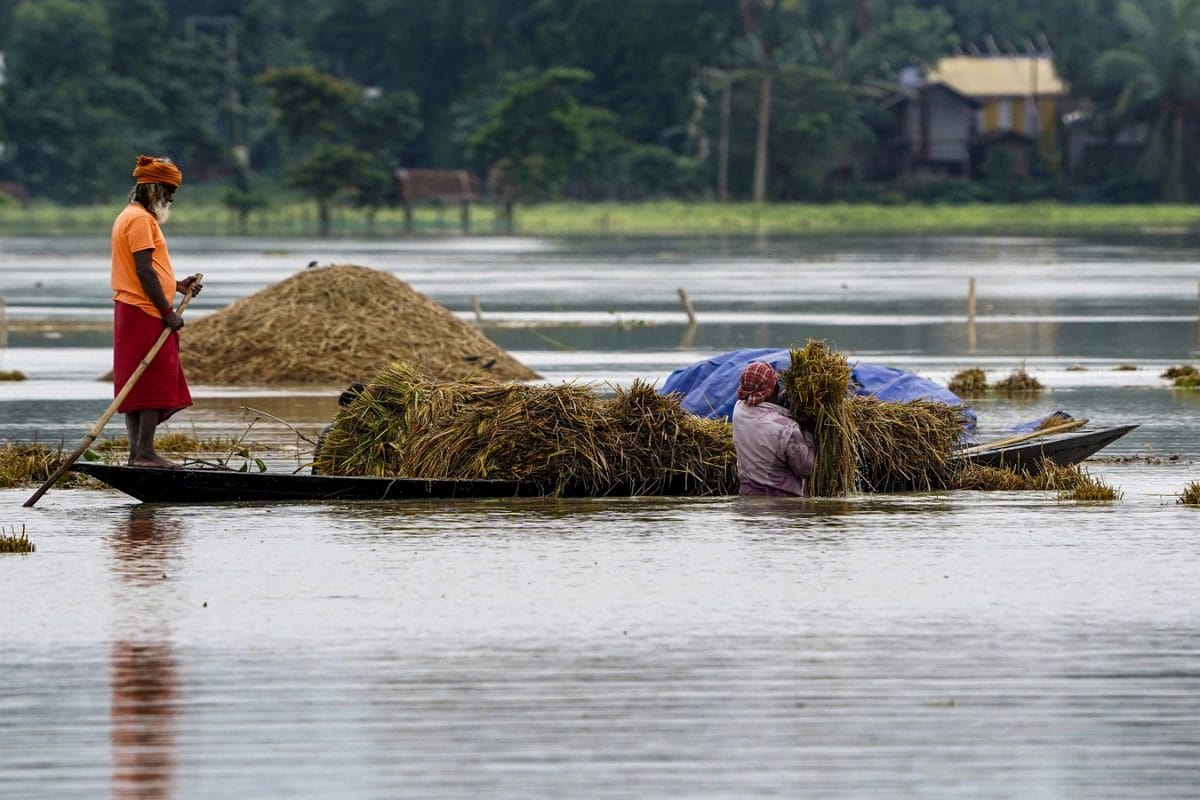

A flash flood triggered by the overflowing Subarnarekha River has impacted the lives of approximately 50,000 people in the Balasore district of Odisha. The surge in water levels followed heavy rainfall in neighboring Jharkhand, causing the river to breach its banks and inundate villages in the region.
The flooding has severely affected 17 gram panchayats across Bhograi, Baliapal, Basta blocks and parts of Jaleswar Notified Area Council (NAC). Several villages, including Baunsakhana and Matikhana, are facing particularly dire situations. Inundation has also been reported in Khalabadia, Kulha, Kudamansingh and Chaudhurykud, with water levels reaching up to four feet in some areas. This has disrupted vehicular movement, isolating panchayats and essential services.
The Subarnarekha River's water level at Rajghat reached 11.9 meters, significantly exceeding the danger mark of 10.36 meters. While the water level has begun to recede, it remains above the danger threshold. The district administration anticipates further recession if rainfall remains minimal in the river's upper catchment areas in Jharkhand. It is believed that the flash flood was intensified due to the release of water from the Chandil Dam in Jharkhand.
In response to the crisis, the Balasore district administration has initiated rescue and relief operations. Residents in vulnerable areas have been placed on high alert and advised to prepare for potential evacuation to nearby cyclone shelters should the situation worsen.
District Collector Suryawanshi Mayur Vikas has directed Block Development Officers (BDOs) and Tehsildars to remain vigilant and prepared to evacuate people if necessary. BDOs are also tasked with distributing dry food items to those affected. The Chief District Medical Officer (CDMO) has been instructed to maintain adequate stocks of essential medicines and ensure healthcare arrangements are in place to tackle potential health emergencies.
The Superintending Engineer (irrigation) has been asked to thoroughly inspect all gates of the Chandil Dam and continuously monitor water levels, implementing all necessary precautionary measures. The Civil Supplies Officer (CSO) is responsible for confirming the availability and adequacy of food and essential supplies.
All leaves for government employees have been canceled until further notice, and a strict directive prohibits government officials from leaving their headquarters without prior permission. This measure aims to ensure effective coordination and a swift response to the ongoing crisis.
Two teams of the Odisha Disaster Rapid Action Force (ODRAF) have been deployed in Balasore, one each at Bhograi and Baliapal. Additional ODRAF teams are stationed in Mayurbhanj district at Nedam/Jharpokharia and Tikayatpur/Rasgovindpur.
The floodwaters have submerged standing crops and damaged vast farmlands, causing significant agricultural losses for local farmers. The administration is assessing the full extent of the damage to provide appropriate compensation and support to the affected communities.